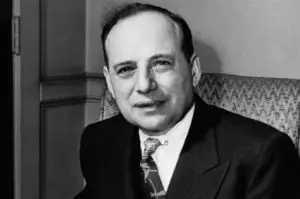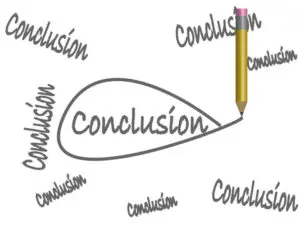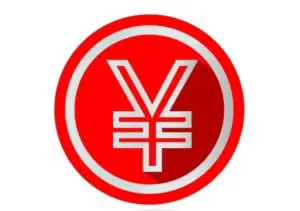(Image: Zen Buddha Silence by Marilyn Barbone.)
March 11, 2018
The Art of Value Investing (Wiley, 2013) is an excellent book by John Heins and Whitney Tilson. Heins and Tilson have been running the monthly newsletter, Value Investor Insight, for a decade now. Over that time, they have interviewed many of the best value investors in the world. The Art of Value Investing is a collection of quotations carefully culled from those interviews.
I’ve selected and discussed the best quotes from the following areas:
- Margin of Safety
- Humility, Flexibility, and Patience
- “Can’t Lose”: Shorting the U.S. Stock Market
- “Can’t Lose”: Shorting the Japanese Yen
- Courage
- Cigar-Butt’s
- Opportunities in Micro Caps
- Predictable Human Irrationality
- Long-Term Time Horizon
- Screening and Quantitative Models
MARGIN OF SAFETY
(Ben Graham, by Equim43)
Ben Graham, the father of value investing, stressed having a margin of safety by buying well below the probable intrinsic value of a stock. This is essential because the future is uncertain. Also, mistakes are inevitable. (Good value investors tend to be right 60 percent of the time and wrong 40 percent of the time.) Jean-Marie Eveillard:
Whenever Ben Graham was asked what he thought would happen to the economy or to company X’s or Y’s profits, he always used to deadpan, ‘The future is uncertain.’ That’s precisely why there’s a need for a margin of safety in investing, which is more relevant today than ever.
Value investing legend Seth Klarman:
People should be highly skeptical of anyone’s, including their own, ability to predict the future, and instead pursue strategies that can survive whatever may occur.
The central idea in value investing is to figure out what a business is worth (approximately), and then pay a lot less to acquire part ownership of that business via stock. Howard Marks:
If I had to identify a single key to consistently successful investing, I’d say it’s ‘cheapness.’ Buying at low prices relative to intrinsic value (rigorously and conservatively derived) holds the key to earning dependably high returns, limiting risk and minimizing losses. It’s not the only thing that matters–obviously–but it’s something for which there is no substitute.
HUMILITY, FLEXIBILITY, AND PATIENCE
(Image by Wilma64)
Successful value investing, to a large extent, is about having the right mindset. Matthew McLennan identifies humility, flexibility, and patience as key traits:
Starting with the first recorded and reliable history that we can find–a history of the Peloponnesian war by a Greek author named Thucydides–and following through a broad array of key historical global crises, you see recurring aspects of human nature that have gotten people into trouble: hubris, dogma, and haste. The keys to our investing approach are the symmetrical opposite of that: humility, flexibility, and patience.
On the humility side, one of the things that Jean-Marie Eveillard firmly ingrained in the culture here is that the future is uncertain. That results in investing with not only a price margin of safety, but in companies with conservative balance sheets and prudent and proven management teams….
In terms of flexibility, we’ve been willing to be out of the biggest sectors of the market…
The third thing in terms of temperament we think we value more than most other investors is patience. We have a five-year average holding period….We like to plant seeds and then watch the trees grow, and our portfolio is often kind of a portrait of inactivity.
It’s hard to overstate the importance of humility in investing. Many of the biggest investing mistakes have occurred when intelligent investors who have succeeded in the past have developed high conviction in an idea that happens to be wrong. Kyle Bass explains this point clearly:
You obviously need to develop strong opinions and to have the conviction to stick with them when you believe you’re right, even when everybody else may think you’re an idiot. But where I’ve seen ego get in the way is by not always being open to questions and to input that could change your mind. If you can’t ever admit you’re wrong, you’re more likely to hang on to your losers and sell your winners, which is not a recipe for success.
It often happens in investing that ideas that seem obvious or even irrefutable turn out to be wrong. The very best investors–such as Warren Buffett, Charlie Munger, Seth Klarman, Howard Marks, Jeremy Grantham, George Soros, and Ray Dalio–have developed enough humility to admit when they’re wrong, even when all the evidence seems to indicate that they’re right.
Here are two great examples of how seemingly irrefutable ideas can turn out to be wrong:
- shorting the U.S. stock market;
- shorting the Japanese yen.
“CAN’T LOSE”: SHORTING THE U.S. STOCK MARKET
(Illustration by Eti Swinford)
Professor Russell Napier is the author ofAnatomy of the Bear (Harriman House, 4th edition, 2016). Napier was a top-rated analyst for many years and has been studying and writing about global macro strategy for institutional investors since 1995.
Napier has maintained (at least since 2012) that the U.S. stock market is significantly overvalued based on the Q-ratio and also the CAPE (cyclically adjusted P/E). Moreover, Napier points out that every major U.S. secular bear market bottom in the last 100 years or so has seen the CAPE approach single digits. The catalyst for the major drop has always been either inflation or deflation, states Napier.
Napier continues to argue that U.S. stocks are overvalued and that deflation will cause the U.S. stock market to drop significantly, similar to previous secular bear markets.
Many highly intelligent value investors–at least since 2012 or 2013–have maintained high cash balances and/or short positions because they essentially agree with Napier’s argument.
However, no one has ever been able to predict the stock market. But if you follow the advice of most great value investors, you just focus on investing in individual businesses that you can understand. There’s no need to try to predict the unpredictable.
That’s not to say there won’t be a large drop in the S&P 500 Index at some point. But Napier was arguing–starting even before 2012–that the S&P 500 Index was overvalued at levels around 1200-1500 and that it would fall possibly as low as 400. It’s now roughly six years later and the S&P 500 Index has recently exceeded 2700-2800. Moreover, Jeremy Grantham, an expert on bubbles and fully aware of arguments by bears like Napier, has recently suggested the S&P 500 Index could exceed 3400-3700 before any serious break.
If the market exceeds 3400 or 3700 and then falls to 1700-2000, Napier still wouldn’t be right because he originally suggested a fall from 1200-1500 towards levels near 400. Napier is one of the smartest market historians in the world. This demonstrates that no one has ever been able to predict the stock market. That’s what great value investors–including Ben Graham, Henry Singleton, Warren Buffett, Charlie Munger, Peter Lynch, and Seth Klarman–have always maintained.
The basic reason the stock market can’t be predicted is that the economy changes and evolves over time.
- For example, Fed policy in recent decades has been to keep interest rates quite low for years in order to prevent deflation. Very low rates cause stocks to be much higher than otherwise.
- Profit margins are arguably higher to the extent that software (and related technologies) has become much more important in the U.S. and global economy. The five largest U.S. companies are Google, Apple, Microsoft, Facebook, and Amazon, all technology companies. Lower corporate taxes are likely giving a further boost to profit margins.
Jeremy Grantham, co-founder of GMO, is one of the most astute value investors who tracks fair value of the S&P 500 Index. Grantham used to think, back in 2012-2013, that the U.S. secular bear market was not over. Then he partially revised his view and predicted that the S&P 500 Index was likely to exceed 2250-2300. This level would have made the S&P 500’s value two standard deviations above the historical mean, indicating that it was back in bubble territory according to GMO’s definition.
Recently, in June 2017, Grantham has revised his view again. See:https://www.gmo.com/docs/default-source/research-and-commentary/strategies/asset-allocation/viewpoints—i-do-indeed-believe-the-us-market-will-revert-toward-its-old-means-just-very-slowly
Grantham says mean reversion for profit margins and for the CAPE (cyclically adjusted P/E) is likely, but will probably take 20 years rather than 7 years (which previously was sufficient for mean reversion). That’s because the factors that support margins and the CAPE are themselves changing very slowly. Those factors include Fed policy including moral hazard, lower interest rates, an aging population, slower growth, productivity, and increased political and monopoly power for corporations.
In January 2018, Grantham updated his view yet again:https://www.gmo.com/docs/default-source/research-and-commentary/strategies/asset-allocation/viewpoints—bracing-yourself-for-a-possible-near-term-melt-up.pdf?sfvrsn=4
Grantham now asserts that a market melt-up is likely over the next 6 months to 2 years. Grantham suggests that the S&P 500 Index will exceed 3400 or 3700. Prices are already high, but few of the usual signs of euphoria are present, which is why Grantham thinks the S&P 500 Index is not quite back to bubble territory.
The historian has to emphasize the big picture: In general are investors getting clearly carried away? Are prices accelerating? Is the market narrowing? And, are at least some of the other early warnings from the previous great bubbles falling into place?
(Image by joshandandreaphotography)
As John Maynard Keynes is (probably incorrectly) reported to have said:
When the information changes, I alter my conclusions. What do you do, sir?
There are some very smart value investors–such as Frank Martin and John Hussman–who still basically agree with Russell Napier’s views. They may eventually be right.
But no one has ever been able to predict the stock market. Ben Graham–with a 200 IQ–was as smart or smarter than any value investor who’s ever lived. And here’s what Graham said near the end of his career:
If I have noticed anything over these sixty years on Wall Street, it is that people do not succeed in forecasting what’s going to happen to the stock market.
In 1963, Graham gave a lecture, “Securities in an Insecure World.” Link:https://www8.gsb.columbia.edu/rtfiles/Heilbrunn/Schloss%20Archives%20for%20Value%20Investing/Articles%20by%20Benjamin%20Graham/DOC005.PDF
In the lecture, Graham admits that the Graham P/E–based on ten-year average earnings of the Dow components–was much too conservative. Graham:
The action of the stock market since then would appear to demonstrate that these methods of valuations are ultra-conservative and much too low, although they did work out extremely well through the stock market fluctuations from 1871 to about 1954, which is an exceptionally long period of time for a test. Unfortunately in this kind of work, where you are trying to determine relationships based upon past behavior, the almost invariable experience is that by the time you have had a long enough period to give you sufficient confidence in your form of measurement just then new conditions supersede and the measurement is no longer dependable for the future.
Graham goes on to note that, in the 1962 edition ofSecurity Analysis, Graham and Dodd addressed this issue. Because of the U.S. government’s more aggressive policy with respect to preventing a depression, Graham and Dodd concluded that the U.S. stock market should have a fair value 50 percent higher.
Similar logic can be applied to the S&P 500 Index today–at just over 2783. Fed policy including moral hazard, lower interest rates, an aging population, slower growth, productivity, and increased political and monopoly power for corporations are all factors in the S&P 500 being quite high. But Grantham is most likely right that there won’t be a true bubble until there are more signs of investors getting carried away. Grantham reminds readers that a bubble is “Excellent Fundamentals Euphorically Extrapolated.” Now that the global economy is doing nicely, this condition for a true bubble is now in place.
None of this suggests that an investor should attempt market timing. Value investors can still find individual stocks that are undervalued, even though there are fewer today than a few years ago. But trying to time the market itself has almost never worked except by luck. This has not only been observed by Graham. But it’s also been pointed out by Peter Lynch, Seth Klarman, Henry Singleton, and Warren Buffett. Peter Lynch is one of the best investors. Klarman is even better. Buffett is arguably the best. And Singleton was even smarter than Buffett.
(Illustration by Maxim Popov)
Peter Lynch:
Nobody can predict interest rates, the future direction of the economy, or the stock market. Dismiss all such forecasts and concentrate on what’s actually happening to the companies in which you’ve invested.
Seth Klarman:
In reality, no one knows what the market will do; trying to predict it is a waste of time, and investing based upon that prediction is a speculative undertaking.
Now, every year there are “pundits” who make predictions about the stock market. Therefore, as a matter of pure chance, there will always be people in any given year who are “right.” But there’s zero evidence that any of those who were “right” at some point in the past have been correct with any sort of reliability.
Howard Marks has asked: of those who correctly predicted the bear market in 2008, how many of them predicted the recovery in 2009 and since then? The answer: very few. Marks points out that most of those who got 2008 right were already disposed to bearish views in general. So when a bear market finally came, they were “right,” but the vast majority missed the recovery starting in 2009.
There are always naysayers making bearish predictions. But anyone who owned an S&P 500 index fund from 2007 to present (early 2018) would have done dramatically better than most of those who listened to naysayers. Buffett:
Ever-present naysayers may prosper by marketing their gloomy forecasts. But heaven help them if they act on the nonsense they peddle.
Buffett himself made a 10-year wager against a group of talented hedge fund (and fund of hedge fund) managers. The S&P 50 Index fund trounced the super-smart hedge funds. See:http://berkshirehathaway.com/letters/2017ltr.pdf
Some very able investors have stayed largely in cash since 2011-2012. The S&P 500 Index has more than doubled since then. Moreover, many have tried to short the U.S. stock market since 2011-2012. Some are down 50 percent or more, while the S&P 500 Index has more than doubled. The net result of that combination is to be at only 15-25% of the S&P 500’s current value.
Henry Singleton, a business genius (100 points from being a chess grandmaster) who was easily one of the best capital allocators in American business history,neverrelied on financial forecasts–despite operating in a secular bear market from 1968 to 1982:
I don’t believe all this nonsense about market timing. Just buy very good value and when the market is ready that value will be recognized.
Warren Buffett puts it best:
- Charlie and I never have an opinion on the market because it wouldn’t be any good and it might interfere with the opinions we have that are good.
- We will continue to ignore political and economic forecasts, which are an expensive distraction for many investors and businessmen.
- Market forecasters will fill your ear but never fill your wallet.
- Forecastsmay tell you a great deal about the forecaster; they tell you nothing about the future.
- Stop trying to predict the direction of the stock market, the economy, interest rates, or elections.
- [On economic forecasts:]Why spend time talking about something you don’t know anything about? People do it all the time, but why do it?
- I don’t invest a dime based on macro forecasts.
“CAN’T LOSE”: SHORTING THE JAPANESE YEN
Another good example of a “can’t lose” investment idea that has turned out not to be right: shorting the Japanese yen. Many macro experts have been quite certain that the Japanese yen versus the U.S. dollar would eventually exceed 200. They thought this would have happened years ago. Some called it the “trade of the decade.” But the yen versus U.S. dollar is still around 110. A simple S&P 500 index fund appears to be doing far better than the “trade of the decade.”
(Illustration by Shalom3)
Some have tried to short Japanese government bonds (JGB’s), rather than shorting the yen currency. But that hasn’t worked for decades. In fact, shorting JGB’s has become known as thewidowmaker trade.
Seth Klarman on humility:
In investing, certainty can be a serious problem, because it causes one not to reassess flawed conclusions. Nobody can know all the facts. Instead, one must rely on shreds of evidence, kernels of truth, and what one suspects to be true but cannot prove.
Klarman on the vital importance of doubt:
It is much harder psychologically to be unsure than to be sure; certainty builds confidence, and confidence reinforces certainty. Yet being overly certain in an uncertain, protean, and ultimately unknowable world is hazardous for investors. To be sure, uncertainty breeds doubt, which can be paralyzing. But uncertainty also motivates diligence, as one pursues the unattainable goal of eliminating all doubt. Unlike premature or false certainty, which induces flawed analysis and failed judgments, a healthy uncertainty drives the quest for justifiable conviction.
My own painful experiences: shorting the U.S. stock market and shorting the Japanese yen. In each case, I believed that the evidence was overwhelming. By far the biggest mistake I’ve ever made was shorting the U.S. stock market in 2011-2013. At the time, I agreed with Russell Napier’s arguments. I was completely wrong.
After that, I shorted the Japanese yen because I was convinced the argument was virtually irrefutable. Wrong. Perhaps the yen will collapse some day, but if it’s 10-20 years in the future–or even later–then an index fund or a quantitative value fund would be a far better and safer investment.
Spencer Davidson:
Over a long career you learn a certain humility and are quicker to attribute success to luck rather than your own brilliance. I think that makes you a better investor, because you’re less apt to make the big mistake and you’re probably quicker to capitalize on good fortune when it shines upon you.
Jeffrey Bronchick:
It’s important not to get carried away with yourself when times are good, and to be able to admit your mistakes and move on when they’re not so good. If you are intellectually honest–and not afraid to be visibly and sometimes painfully judged by your peers–investing is not work, it’s fun.
Patiently waiting for pessimism or temporary bad news to create low stock prices (some place), and then buying stocks well below probable intrinsic value, does not require genius in general. But it does require the humility to focus only on areas where you can do well. As Warren Buffett has remarked:
What counts for most people in investing is not how much they know, but rather how realistically they define what they don’t know.
COURAGE
(Courage concept by Travelling-light)
Humility is essential for success in investing. But you also need the courage to think and act independently. You have to be able to develop an investment thesis based on the facts and good reasoning without worrying if many others disagree. Most of the best value investments are contrarian, meaning that your view differs from the consensus. Ben Graham:
In the world of securities, courage becomes the supreme virtue after adequate knowledge and a tested judgment are at hand.
Graham again:
You’re neither right nor wrong because the crowd disagrees with you. You’re right because your data and reasoning are right.
Or as Carlo Cannell says:
Going against the grain is clearly not for everyone–and it doesn’t tend to help you in your social life–but to make the really large money in investing, you have to have the guts to make the bets that everyone else is afraid to make.
Joel Greenblatt identifies two chief reasons why contrarian value investing is hard:
Value investing strategies have worked for years and everyone’s known about them. They continue to work because it’s hard for people to do, for two main reasons. First, the companies that show up on the screens can be scary and not doing so well, so people find them difficult to buy. Second, there can be one-, two- or three-year periods when a strategy like this doesn’t work. Most people aren’t capable of sticking it out through that.
Contrarian value investing requires buying what is out-of-favor, neglected, or hated. It also requires the ability to endure multi-year periods of trailing the market, which most investors just can’t do. Furthermore, while you’re buying what everyone hates and while you’re trailing the market, you also have to put up with people calling you an idiot. In a word, you must have the ability to suffer. Eveillard:
If you are a value investor, you’re a long-term investor. If you are a long-term investor, you’re not trying to keep up with a benchmark on a short-term basis. To do that, you accept in advance that every now and then you will lag behind, which is another way of saying you will suffer. That’s very hard to accept in advance because, the truth is, human nature shrinks from pain. That’s why not so many people invest this way. But if you believe as strongly as I do that value investing not only makes sense, but that it works, there’s really no credible alternative.
CIGAR-BUTT’S
(Photo by Leung Cho Pan)
Warren Buffett has remarked that buying baskets of statistically cheap cigar-butt’s–50-cent dollars–is a more dependable way to generate good returns than buying high-quality businesses. Rich Pzena perhaps expressed it best:
When I talk about the companies I invest in, you’ll be able to rattle off hundreds of bad things about them–but that’s why they’re cheap! The most common comment I get is ‘Don’t you read the paper?’ Because if you read the paper, there’s no way you’d buy these stocks.
They’re priced where they are for good reason, but I invest when I believe the conditions that are causing them to be priced that way are probably not permanent. By nature, you can’t be short-term oriented with this investment philosophy. If you’re going to worry about short-term volatility, you’re just not going to be able to buy the cheapest stocks. With the cheapest stocks, the outlooks are uncertain.
Many investors incorrectly assume that high growth in the past will continue into the future, or that a high-quality company is automatically a good investment. Behavioral finance expert and value investor James Montier:
There’s a great chapter [in Dan Ariely’s Predictably Irrational] about the ways in which we tend to misjudge price and use it as an indicator of something or other. That links back to my whole thesis that the most common error we as investors make is overpaying for the hope of growth. Dan did an experiment involving wine, in which he told people, ‘Here’s a $10 bottle of wine and here’s a $90 bottle of wine. Please rate them and tell me which tastes better.’ Not surprisingly, nearly everyone thought the $90 wine tasted much better than the $10 wine. The only snag was that the $90 wine and the $10 wine were actually the same $10 wine.
OPPORTUNITIES IN MICRO CAPS
(Illustration by Mopic)
Micro-cap stocks are the most inefficiently priced. That’s because, for most professional investors, assets under management are too large. These investors cannot even consider micro caps. The Boole Microcap Fund is designed to take advantage of this inefficiency:https://boolefund.com/best-performers-microcap-stocks/
James Vanasek on the opportunity in micro caps:
We’ll invest in companies with up to $1 billion or so in market cap, but have been most successful in ideas that start out in the $50 million to $300 million range. Fewer people are looking at them and the industries the companies are in can be quite stable. Given that, if you find a company doing well, it’s more likely it can sustain that advantage over time.
Because very few professional investors can even contemplate investing in micro caps, there’s far less competition. Carlo Cannell:
My basic premise is that the efficient markets hypothesis breaks down when there is inconsistent, imperfect dissemination of information. Therefore it makes sense to direct our attention to the 14,000 or so publicly traded companies in the U.S. for which there is little or no investment sponsorship by Wall Street, meaning three or fewer sell-side analysts who publish research…
You’d be amazed how little competition we have in this neglected universe. It is just not in the best interest of the vast majority of the investing ecosphere to spend 10 minutes on the companies we spend our lives looking at.
Robert Robotti adds:
We focus on smaller-cap companies that are largely ignored by Wall Street and face some sort of distress, of their own making or due to an industry cycle. These companies are more likely to be inefficiently priced and if you have conviction and a long-term view they can produce not 20 to 30 percent returns, but multiples of that.
PREDICTABLE HUMAN IRRATIONALITY
Value investors recognize that the stock market is not always efficient, largely because humans are often less than fully rational. As Seth Klarman explains:
Markets are inefficient because of human nature–innate, deep-rooted, permanent. People don’t consciously choose to invest with emotion–they simply can’t help it.
Quantitative value investor James O’Shaughnessy:
Because of all the foibles of human nature that are well documented by behavioral research–people are always going to overshoot and undershoot when pricing securities. A review of financial markets all the way back to the South Sea Company nearly 300 years ago proves this out.
Bryan Jacoboski:
The very reason price and value diverge in predictable and exploitable ways is because people are emotional beings. That’s why the distinguishing attribute among successful investors is temperament rather than brainpower, experience, or classroom training. They have the ability to be rational when others are not.
Overconfidence is extremely deep-rooted in human psychology. When asked, the vast majority of us rate ourselves as above average across a wide variety of dimensions such as looks, smarts, driving skill, academic ability, future well-being, and even luck (!).
In a field such as investing, it’s vital to become aware of our natural overconfidence. Charlie Munger likes this quote from Demosthenes:
Nothing is easier than self-deceit. For what each man wishes, that also he believes to be true.
But becoming aware of our overconfidence is usually not enough. We also have to develop systems–such as checklists–that can automatically reduce both the frequency and the severity of mistakes.
(Image by Aleksey Vanin)
Charlie Munger reminds value investors not only to develop and use a checklist, but also to follow the advice of mathematician Carl Jacobi:
Invert, always invert.
In other words, instead of thinking about how to succeed, Munger advises value investors to figure out all the ways you can fail. This is a powerful concept in a field like investing, where overconfidence frequently causes failure. Munger:
It is occasionally possible for a tortoise, content to assimilate proven insights of his best predecessors, to outrun hares which seek originality or don’t wish to be left out of some crowd folly which ignores the best work of the past. This happens as the tortoise stumbles on some particularly effective way to apply the best previous work, or simply avoids the standard calamities. We try more to profit by always remembering the obvious than from grasping the esoteric. It is remarkable how much long-term advantage people like us have gotten by trying to be consistently not stupid, instead of trying to be very intelligent.
When it comes to checklists, it’s helpful to have a list of cognitive biases. Here’s my list:https://boolefund.com/cognitive-biases/
Munger’s list is more comprehensive:https://boolefund.com/the-psychology-of-misjudgment/
Recency bias is one of the most important biases to be aware of as an investor. Jed Nussdorf:
It is very hard to avoid recency bias, when what just happened inordinately informs your expectation of what will happen next. One of the best things I’ve read on that is The Icarus Syndrome, by Peter Beinart. It’s not about investing, but describes American hubris in foreign policy, in many cases resulting from doing what seemed to work in the previous 10 years even if the setting was materially different or conditions had changed. One big problem is that all the people who succeed in the recent past become the ones in charge going forward, and they think they have it all figured out based on what they did before. It’s all quite natural, but can result in some really bad decisions if you don’t constantly challenge your core beliefs.
Availability bias is closely related to recency bias and vividness bias. You’re at least 15-20 times more likely to be hit by lightning in the United States than to be bitten by shark. But often people don’t realize this because shark attacks tend to be much more vivid in people’s minds. Similarly, your odds of dying in a car accident are 1 in 5,000, while your odds of dying in a plane crash are 1 in 11 million. Nonetheless, many people view flying as more dangerous.
John Dorfman on investors overreacting to recent news:
Investors overreact to the latest news, which has always been the case, but I think it’s especially true today with the Internet. Information spreads so quickly that decisions get made without particularly deep knowledge about the companies involved. People also overemphasize dramatic events, often without checking the facts.
LONG-TERM TIME HORIZON

Because so many investors worry and think about the shorter term, value investors continue to gain a large advantage by focusing on the longer term (especially three to five years). In a year or less, a given stock can do almost anything. But over a five-year period, a stock tracks intrinsic business value to a large extent. Jeffrey Ubben:
It’s still true that the biggest players in the public markets–particularly mutual funds and hedge funds–are not good at taking short-term pain for long-term gain. The money’s very quick to move if performance falls off over short periods of time. We don’t worry about headline risk–once we believe in an asset, we’re buying more on any dips because we’re focused on the end game three or four years out.
Mario Cibelli:
One of the last great arbitrages left is to be long-term-oriented when there is a large class of shareholders who have no tolerance for short-term setbacks. So it’s interesting when stocks get beaten-up because a company misses earnings or the market reacts to a short-term business development. It’s crazy to me when someone says something is cheap but doesn’t buy it because they think it won’t go anywhere for the next 6 to 12 months. We have a pretty high tolerance for taking that pain if we see glory longer term.
Whitney Tilson wrote about a great story that value investor Bill Miller told. Miller recalled that, early in his career, he was visiting an institutional money manager, to whom he was pitching R.J. Reynolds, then trading at four times earnings. Miller:
“When I finished, the chief investment officer said: ‘That’s a really compelling case but we can’t own that. You didn’t tell me why it’s going to outperform the market in the next nine months.’ I said I didn’t know if it was going to do that or not but that there was a very high probability it would do well over the next three to five years.
“He said: ‘How long have you been in this business? There’s a lot of performance pressure, and performing three to five years down the road doesn’t cut it. You won’t be in business then. Clients expect you to perform right now.’
“So I said: ‘Let me ask you, how’s your performance?’
“He said: ‘It’s terrible, that’s why we’re under a lot of performance pressure.’
“I said: ‘If you bought stocks like this three years ago, your performance would be good right now and you’d be buying RJR to help your performance over the next three years.'”
Many investors are so focused on shorter periods of time (a year or less). They forget that the value of any business is ALL of its (discounted) future free cash flow, which often means 10-20 years or more. David Herro:
I would assert the biggest reason quality companies sell at discounts to intrinsic value is time horizon. Without short-term visibility, most investors don’t have the conviction or courage to hold a stock that’s facing some sort of challenge, either internally or externally generated. It seems kind of ridiculous, but what most people in the market miss is that intrinsic value is the sum of ALLfuture cash flows discounted back to the present. It’s not just the next six months’ earnings or the next year’s earnings. To truly invest for the long term, you have to be able to withstand underperformance in the short term, and the fact of the matter is that most people can’t.
As Mason Hawkins observes, a company may be lagging now precisely because it’s making longer-term investments that will probably increase business value in the future:
Classic opportunities for us get back to time horizon. A company reports a bad quarter, which disappoints Wall Street with its 90-day focus, but that might be for explainable temporary reasons or even because the company is making very positive long-term investments in the business. Many times that investment increases the likely value of the company five years from now, but disappoints people who want the stock up tomorrow.
Whitney George:
We evaluate businesses over a full business cycle and probably our biggest advantage is an ability to buy things when most people can’t because the short-term outlook is lousy or very hard to judge. It’s a good deal easier to know what’s likely to happen than to know precisely when it’s going to happen.
In general, humans are impatient and often discount multi-year investment gains far too much. John Maynard Keynes:
Human nature desires quick results, there is a particular zest in making money quickly, andremoter gainsare discounted by the average man at a very high rate.
SCREENING AND QUANTITATIVE MODELS
(Word cloud by Arloofs)
Automating of the investment process, including screening, is often more straightforward now than it has been, thanks to enormous advances in computing in the past two decades.
Will Browne:
We often start with screens on all aspects of valuation. There are characteristics that have been proven over long periods to be associated with above-average rates of return: low P/Es, discounts to book value, low debt/equity ratios, stocks with recent significant price declines, companies with patterns of insider buying and–something we’re paying a lot more attention to–stocks with high dividend yields.
Stephen Goddard:
Our basic screening process weights three factors equally: return on tangible capital, the multiple of EBIT to enterprise value, and free cash flow yield. We rank the universe we’ve defined on each factor individually from most attractive to least, and then combine the rankings and focus on the top 10%.
Carlo Cannell:
[We] basically spend our time trying to uncover the assorted investment misfits in the market’s underbrush that are largely neglected by the investment community. One of the key metrics we assign to our companies is an analyst ratio, which is simply the number of analysts who follow the company. The lower the better–as of the end of last year, about 65 percent of the companies in our portfolio had virtually no analyst coverage.
For some time now, it has been clear that simple quant models outperform experts in a wide variety of areas:https://boolefund.com/simple-quant-models-beat-experts-in-a-wide-variety-of-areas/
Quantitative value investor James O’Shaughnessy:
Models beat human forecasters because they reliably and consistently apply the same criteria time after time. Models never vary. They are never moody, never fight with their spouse, are never hung over from a night on the town, and never get bored. They don’t favor vivid, interesting stories over reams of statistical data. They never take anything personally. They don’t have egos. They’re not out to prove anything. If they were people, they’d be the death of any party.
People on the other hand, are far more interesting. It’s far more natural to react emotionally or to personalize a problem than it is to dispassionately review broad statistical occurrences–and so much more fun! It’s much more natural for us to look at the limited set of our personal experiences and then generalize from this small sample to create a rule-of-thumb heuristic. We are a bundle of inconsistencies, and although this tends to make us interesting, it plays havoc with our ability to successfully invest.
Buffett maintains (correctly) that the vast majority of investors, large or small, should invest in low-cost broad market index funds:https://boolefund.com/quantitative-microcap-value/
If you invest in a quantitative value fund focused on cheap micro caps with improving fundamentals, then you can reasonably expect to do about 7% (+/- 3%) better than the S&P 500 Index over time:https://boolefund.com/best-performers-microcap-stocks/
Will Browne:
When you have a model you believe in, that you’ve used for a long time and which is more empirical than intuitive, sticking with it takes the emotion away when markets are good or bad. That’s been a central element of our success. It’s the emotional dimension that drives people to make lousy, irrational decisions.
BOOLE MICROCAP FUND
An equal weighted group of micro caps generally far outperforms an equal weighted (or cap-weighted) group of larger stocks over time. See the historical chart here: https://boolefund.com/best-performers-microcap-stocks/
This outperformance increases significantly by focusing on cheap micro caps. Performance can be further boosted by isolating cheap microcap companies that show improving fundamentals. We rank microcap stocks based on these and similar criteria.
There are roughly 10-20 positions in the portfolio. The size of each position is determined by its rank. Typically the largest position is 15-20% (at cost), while the average position is 8-10% (at cost). Positions are held for 3 to 5 years unless a stock approachesintrinsic value sooner or an error has been discovered.
The mission of the Boole Fund is to outperform the S&P 500 Index by at least 5% per year (net of fees) over 5-year periods. We also aim to outpace the Russell Microcap Index by at least 2% per year (net). The Boole Fund has low fees.
If you are interested in finding out more, please e-mail me or leave a comment.
My e-mail: [email protected]
Disclosures: Past performance is not a guarantee or a reliable indicator of future results. All investments contain risk and may lose value. This material is distributed for informational purposes only. Forecasts, estimates, and certain information contained herein should not be considered as investment advice or a recommendation of any particular security, strategy or investment product. Information contained herein has been obtained from sources believed to be reliable, but not guaranteed.No part of this article may be reproduced in any form, or referred to in any other publication, without express written permission of Boole Capital, LLC.













articolo perfetto grazie